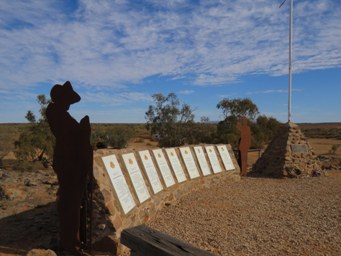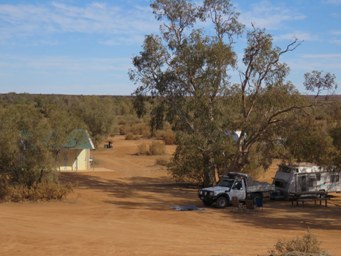Australia So Much to See
Farina - the search for water, Farina Campground, Farina War Memorial
The construction of wells was a difficult undertaking. The maximum depth to which a well could be sunk manually was 43 metres,
before the air became too foul. The sides were lined with timber. Originally, water was lifted from the wells by a windlass,
rope and 45 litre buckets. This limited the amount of livestock which could be watered.
Along the line of wells
established by Goyder, more than 50% failed either due to diminishing water supply, or salinity.
The original town reservoir
is located on the creekline to the west of the campground, now known as House Dam, and remains part of the water supply for the station
homestead and the campground.
Water for the railway system, including the overhead railway tank of over 200,000 litres
was drawn from large dams three kilometres to the north.
Well Number 2 1874. This is a hand dug, stone walled well. Water is present in this well at seven metres. The water is salty but suitable for livestock.
Originally operated by a windmill, it is now operated by a pump which is now solar powered. This well is used in drought seasons for the station and campground.
The windmill above has
almost toppled over, and the sails lay on the ground nearby.
The Artesian attempt. In 1882, the South Australia Government commissioned an Artesian bore at this location, which was completed
in 1883. The Great Artesian Basin was thought to terminate at Marree, fifty kilometres to further north. A limited flow
of salty water was achieved, without encountering the Artesian water. The cast iron pipe on display is typical of bore pipe
in that era.
Well Number 1 was originally an open timbered well, equipped with a hand windlass and bucket. Water was then transferred to
a large stone holding tank, pump to a steel tank on a stand to give water pressure, so it could be gravity fed to livestock troughs. A windmill was later installed.
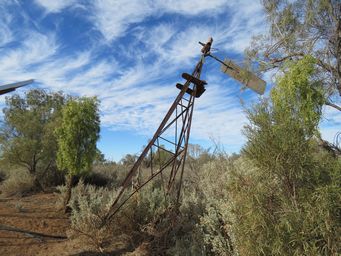
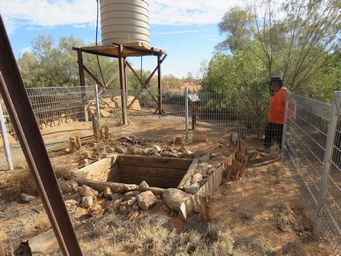
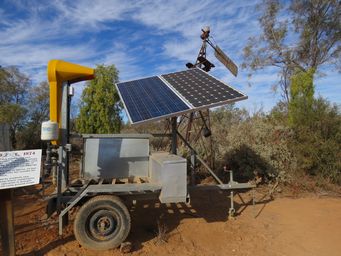
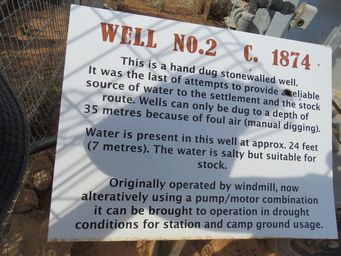
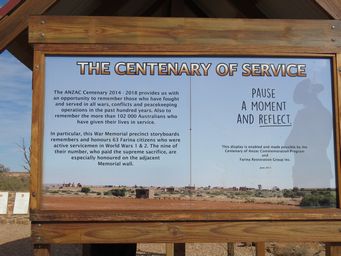
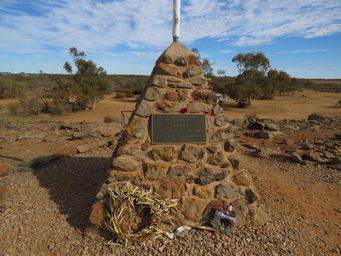
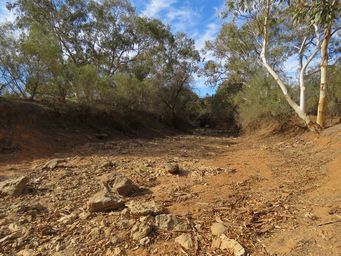
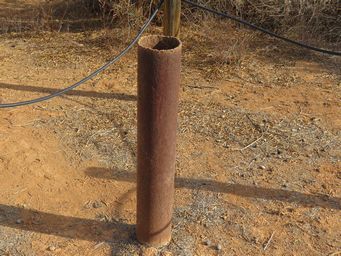
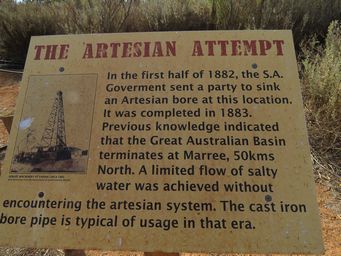
Farina was the first refuelling stop on the original Adelaide to Darwin air route. Jack Bell, the storekeeper, transported petrol
in tins on the tray of his vehicle to refuel the plane which his wife Eva took tea and sandwiches to the passengers during their 45
minute stopover.
Jack and Eva Bell had three sons, two of whom were killed during war service.
On the hill overlooking the campground is the Farina War Memorial. This War Memorial precinct with storyboards remembers and honours
63 Farina citizens who were active servicemen in World Wars I and II. Nine of whom never made it home are honoured on the memorial
wall.
Farina historic Cemetery is three kilometres west of the campground.
Follow signs through the history village and across the creekline to Farina Campground. Fees are $5 per person per night, with
an honesty box near the campground entrance.
This camping area has sites spread out amongst the trees. There is
an amenities block near the entrance, with three unisex toilets and three unisex showers. There is a handbasin on the exterior. Doors open outwards, cubicles are roomy, with a mat provided under the shower. A hot water donkey is lit by campers each afternoon,
but with the volume of people wanting showers, this did not keep pace.
Towards the eastern end of the campground, there is a smaller shower and toilet block with hot water donkey. Fire rings are
provided, but you will need to bring your own fire ward or purchase from the camp hosts. Drums are provided as bins, with an
extra one for glass and cans for recycling.
For those not camping, accommodation is available at the shearer’s quarters.
Resources
Information boards at Farina
